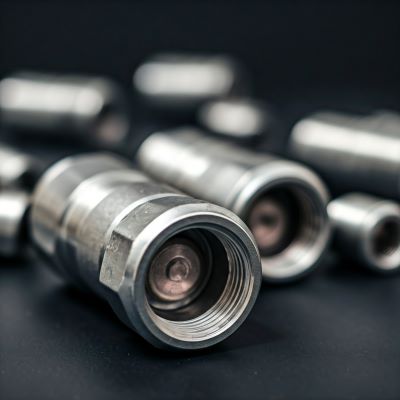Hydraulic flare fittings are essential components in fluid power systems, playing a crucial role in ensuring reliable and efficient operation. These fittings are designed to create leak-tight connections between hoses and pipes, preventing fluid loss and maintaining system integrity.
In this comprehensive guide, we will delve into the intricacies of hydraulic flare fittings, exploring their design, benefits, applications, installation, maintenance, and selection.
What Are Hydraulic Flare Fittings?
Hydraulic flare fittings are mechanical connectors that utilize a flared end on a tube or pipe to create a seal against a mating fitting. This design principle ensures a secure and leak-proof connection, even under high-pressure conditions.
Key Components:
➡️ Fitting Body: The main housing of the fitting, often made of steel, brass, or stainless steel.
➡️ Nut: A threaded component that secures the fitting to the tube or pipe.
➡️ Ferrule: A tapered sleeve that compresses the flared end of the tube against the fitting body, creating the seal.
Common Materials:
➡️ Steel: Offers strength and durability for high-pressure applications.
➡️ Brass: Provides good corrosion resistance and machinability.
➡️ Stainless Steel: Ideal for corrosive environments and applications requiring high levels of cleanliness.
Benefits of Hydraulic Flare Fittings
➡️ Leak-Free Connections: The flared design ensures a tight seal, preventing fluid leakage and maintaining system efficiency.
➡️ Durability and Corrosion Resistance: High-quality materials and robust construction contribute to long-lasting performance, even in harsh conditions.
➡️ Ease of Installation and Maintenance: Proper installation techniques and readily available tools make flare fittings relatively straightforward to assemble and service.
Applications of Hydraulic Flare Fittings
➡️ Automotive Hydraulic Systems: Power steering, brake systems, and suspension systems rely on flare fittings for reliable fluid delivery.
➡️ Industrial Fluid Power Systems: Hydraulic presses, pumps, and valves often utilize flare fittings to connect hoses and pipes.
➡️ Agricultural and Heavy Equipment: Hydraulic systems in tractors, excavators, and other heavy machinery employ flare fittings to ensure fluid integrity.
Types of Hydraulic Flare Fittings
➡️ Single Flare vs. Double Flare: Single-flare fittings have a single flared end, while double-flare fittings have a flared end on both sides, providing additional sealing capacity.
➡️ Fitting Angles: Common angles include 37-degree JIC (Joint Industry Council) and 45-degree SAE (Society of Automotive Engineers) fittings.
How to Install Hydraulic Flare Fittings Correctly
1. Prepare the Tube: Cut the tube to the desired length and clean the end to remove any burrs or impurities.
2. Flare the Tube: Use a flaring tool to create a precise flare on the tube end, ensuring the correct angle and depth.
3. Assemble the Fitting: Insert the flared tube into the fitting body and tighten the nut using a wrench.
4. Torque the Fitting: Apply the recommended torque to the nut to achieve a secure connection without overtightening.
Maintenance and Troubleshooting Tips
➡️ Regular Inspection: Visually inspect fittings for signs of wear, damage, or leaks.
➡️ Leak Detection: Use leak detection fluid or a pressure test to identify any leaks.
➡️ Replacement: Replace worn-out or damaged fittings promptly to prevent failures.
How to Choose the Right Hydraulic Flare Fittings
➡️ Pressure Rating: Select fittings that can withstand the maximum system pressure.
➡️ Material Compatibility: Ensure the fitting material is compatible with the fluid being used.
➡️ Fitting Size: Match the fitting size to the hose or pipe diameter.
➡️ Quality and Standards: Choose fittings from reputable manufacturers that adhere to industry standards.
Conclusion
Hydraulic flare fittings are essential components in fluid power systems, providing reliable and leak-free connections. By understanding the different types of fittings, proper installation techniques, and maintenance best practices, you can ensure optimal performance and longevity of your hydraulic systems.
Prioritize quality, adhere to industry standards, and invest in proper installation to reap the benefits of these versatile connectors.
Post time: Dec-16-2024


